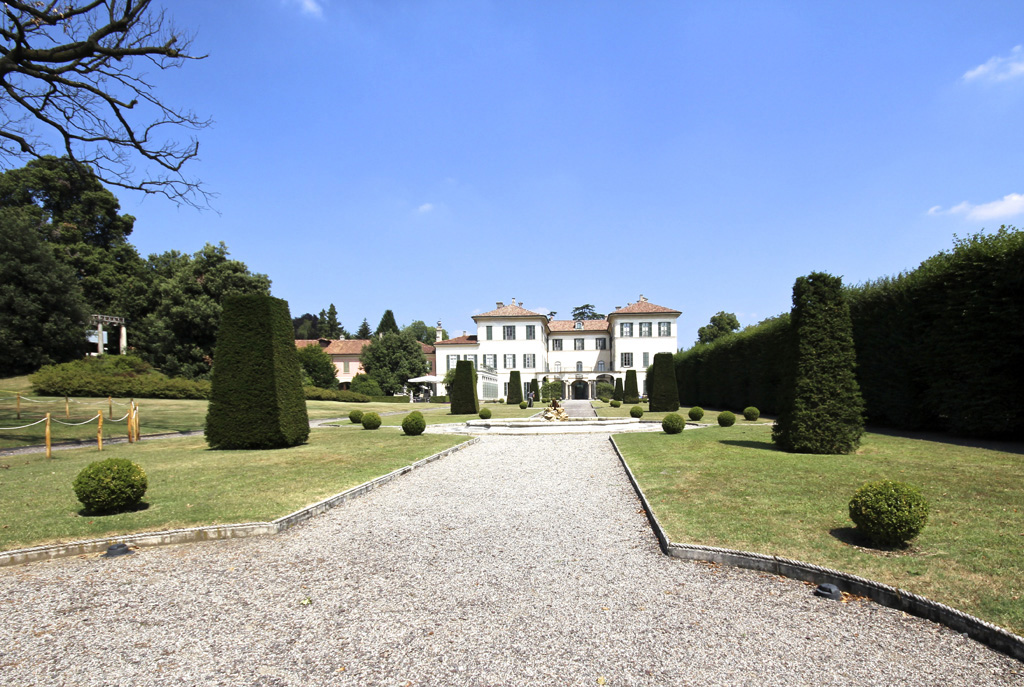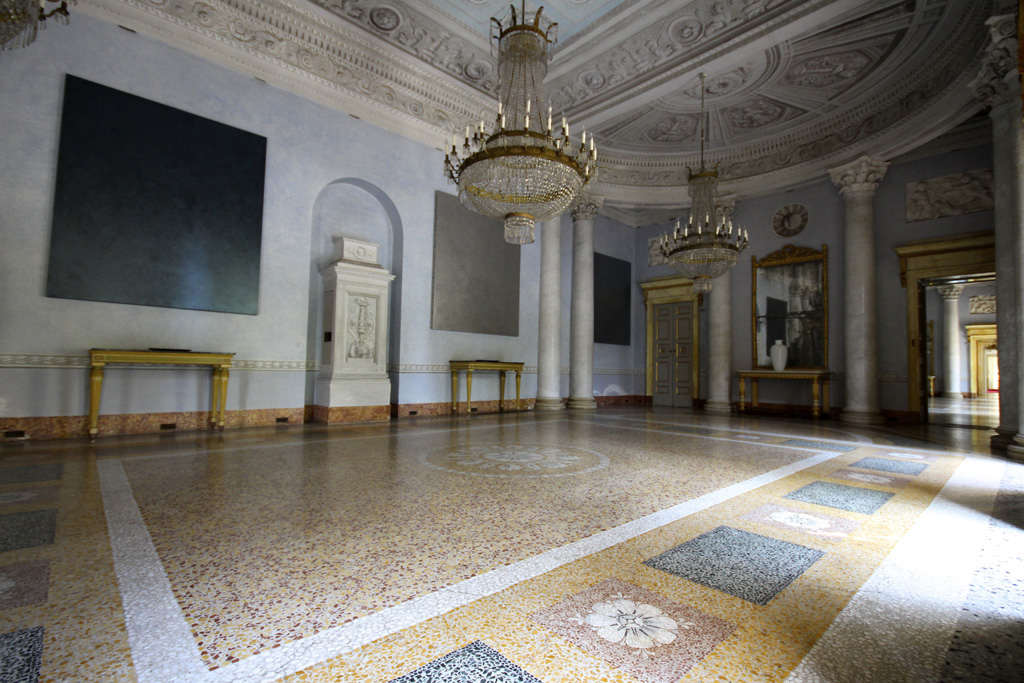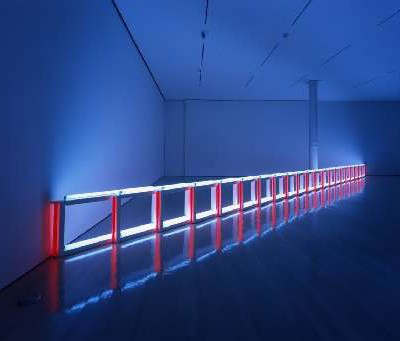Giuseppe Panza Collection, Varese
Villa Panza Di Biumo. Varese, 2013.
I felt a little upset knowing that my friends were about to see the James Turrell show in New York, so I thought “why not visit Villa Panza?” There are places that are real landmarks in the history of art; places bearing an aura of legend, where the joy of being there is one and the same with our imagination.
Who knows what these walls could say, should they be able to speak. Villa Panza del Biumo is the foundation of Count Panza del Biumo: a collector, eager researcher, and a Minimalism lover. The villa, which he generously donated to the FAI (Fondo Ambiente Italiano), has become one of the world’s most important Minimal Art museums.
Its major highlight is the largest existing Dan Flavin collection. In fact, although they were not in very good relations, Count Panza del Biumo was still Dan Flavin’s major collector.
The villa is huge, and surrounded by a stately park.


A plethora of exhibition rooms, all filled with impressive monochromes, occupy the first floor and part of the second floor. Everything appears to be a sort of visual preparation for the neon-lights area on the second floor.
All his life, Giuseppe Panza tried to reach a point and materially fix the infinite – or its idea – as well as the abstract, the incorporeal and the spiritual metaphysical.
The rooms on the second floor, with those James Turrels, Dan Flavins, Robert Irwin and Michael Brewster, are among the most beautiful and evocative places I have ever seen.
Each of these artworks break the limits of space, and was a gesture of split towards its time. Finding myself in front of such historical pieces is always exciting. It is the thrill of crossing the border between seeing in a book an artwork that has marked a fundamental change in the history of art and actually facing it hic et nunc.


I feel like an archaeologist in a pyramid, violating the secret of a tomb, with the fear and desire to find something.
If it is true that the artists’ energy actually remains in their work, then Flavin’s work is one of the clearest examples of such truth. His works vibrate of a ghostly puissance of their own. Ghostly precisely because the artist’s ghost, his aura, remains bound to the artwork and tells us about the man and his soul. The walls of this magnificent villa ooze with the image of a place haunted by the ghosts of the collector and his artists.
The colour of the neon lights pulses within the structure as if water were all around. The reflection of the lights on the wall and on the shining floor paints a suspended atmosphere. The “General Electric” brand, appearing on the salmon-pink assembled equipment, looks flaking and well worn, and accounts for moments of contemporary archaeology and narration. They speak to our imagination more than any book.


I can imagine the artist moving around his neon tubes in the New York City Jamaican district, surrounded by the Big Apple’s sounds, colours and people. This artwork shows a static potential intensity, which, in spite of its light colours, reveals a most virile side.
In another room, a little square silhouette by the window projects a square sunbeam on the floor, changing intensity and colour according to the time of the year and the time of the day. This is an artwork by Robert Irwin.
The neon light in this room is lying on the floor as if it were resting. Getting closer, one can hear its metal buzzing. In another room the neon light is standing, still and gracefully. It is soaring and it is lonely.
It is amazing to see how the same medium can evoke so many different attitudes. Still, so it is with Dan Flavin. His works can be joyful, sad, lonesome, playful, doubtful, serene or circumspect, painful, tormented, restless or safe, silent and intense. In a word, warm, in spite of their neutrality. In the room ending the path, there is a sound installation by Michael Brewster, a sensorial experience on fullness and emptiness obtained by exploiting the echo between the walls.
The artworks in Villa Panza are just a small part of the collection which includes among others Carl Andre, Joseph Beuys, Jean Fautreir, Franz Kline, Joseph Kosuth, Sol Lewitt, Bruce Nauman, Robert Morris, Robert Rauschenberg, James Rosenquist, Mark Rothko, George Segal, Richard Serra, Joel Shapiro, Antoni Tàpies, Robert Therrien…
View the original article here.
Contributor, Fiammetta De Michele
DOGMA
Milan-based, Fiammetta De Michele is an art advisor, curator and founder of DOGMA. Raised in a family of art collectors, she naturally fell in love with all the manifestations of art. She spent years making conceptual, video and performance art. She has been widely published and exhibited, including the feature cover of A Rush of Culture. Having access to incredible artists studios and collections, De Michele decided to share this experience online. Dogma is a concept space, an independent platform, and a digital arena for experimentation.






